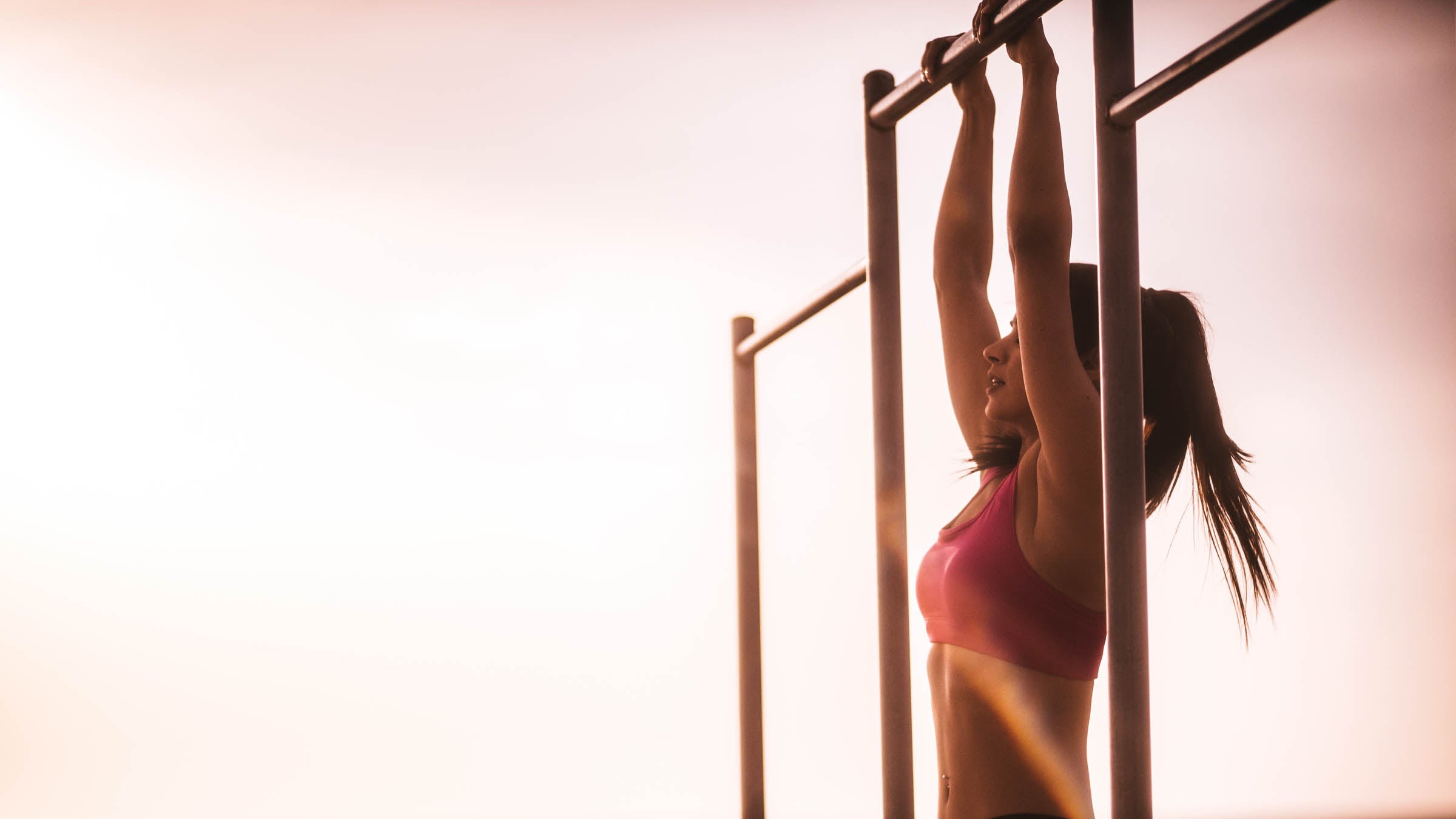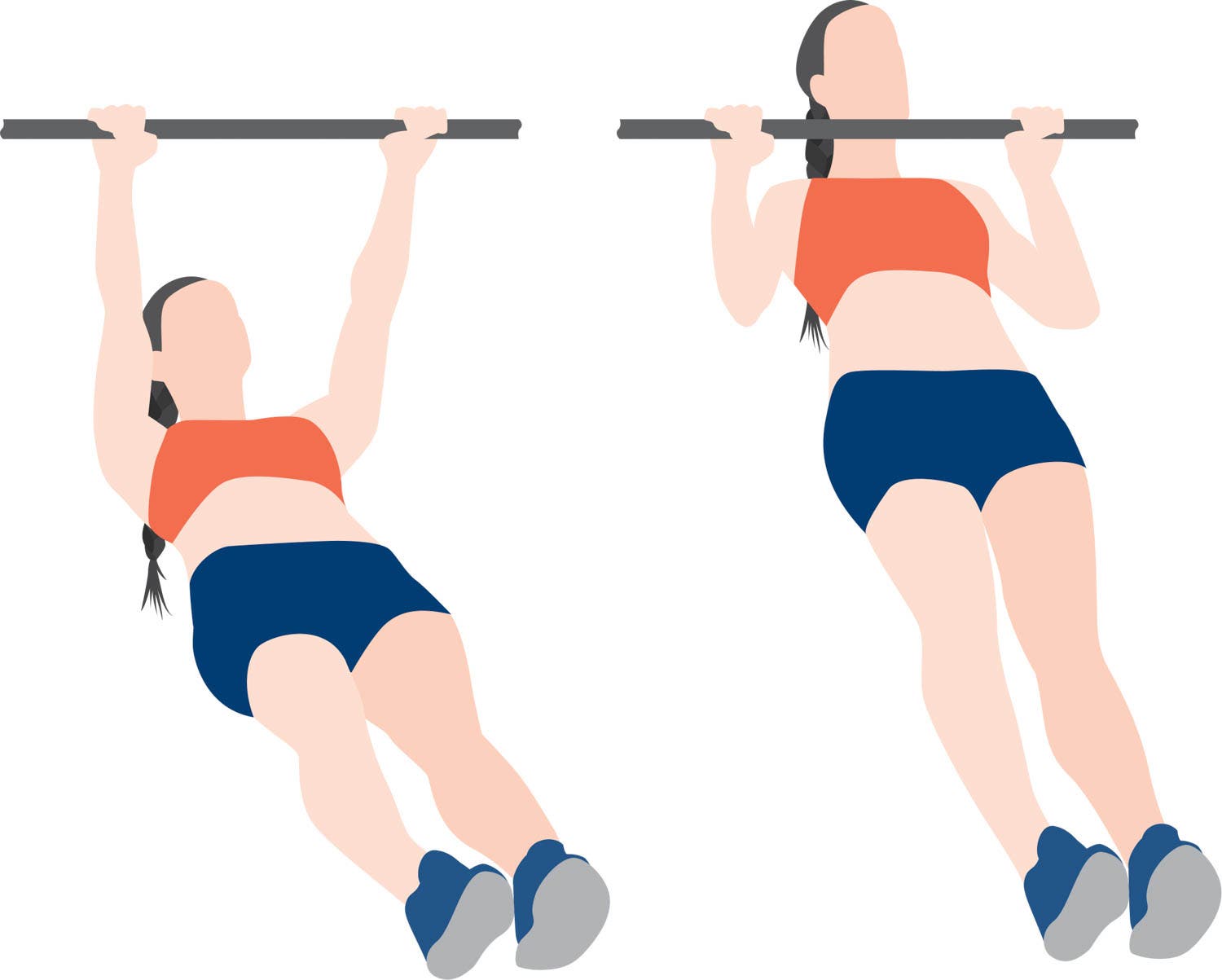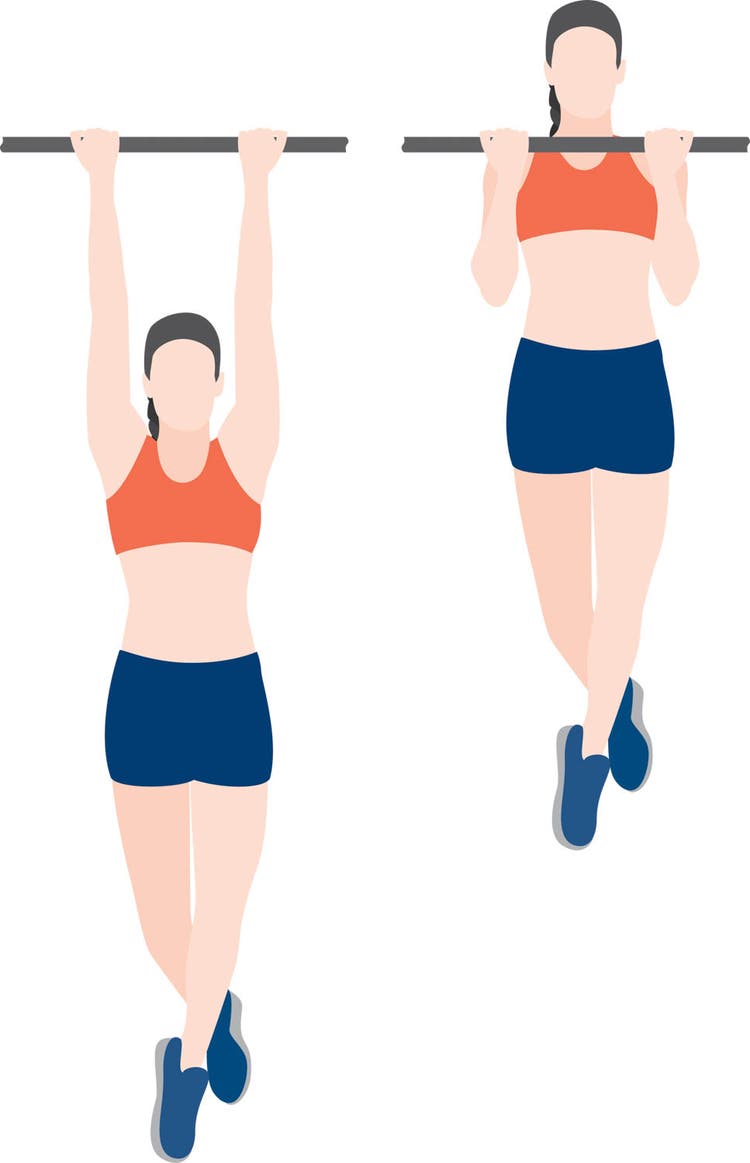Why Runners Need Pull-Ups (And How to Do One in 6 Weeks)

(Photo: Getty Images)
As a smart runner who wants to ward off injuries, you (hopefully) already have a regular core and lower-body strength routine. But it turns out that sculpting your lats as well as your shoulders and arms is equally important. And there’s one move that works them all: the pull-up.
“When those muscles are strong, you’re using the whole machine that the body is rather than just relying on your legs,” says Mike Simone, certified trainer and founder of HumanFitProject.
The back muscles are such a big part of your body, they can create a lot of force and power, Simone says. Combined with your arms and shoulders, these muscles help propel you forward, optimizing your stride.
Research backs this up: A study in the Journal of Experimental Biology found that arm swinging reduces the metabolic cost of running. Translation: You can run longer without getting as fatigued overall. Plus, the arm swing helps keep your torso stable, promoting good form.
Sold? Great. Now here’s why the pull-up is worth your time and investment. “The pull-up is arguably the single best exercise you can do for your body because it works so many muscles,” Simone says. Those muscles include the entire core, lats, shoulders, biceps, forearms, and more. And you don’t need a ton of equipment, either. (You can get a pull-up bar for your door frame for around $30.)
Have we mentioned the empowerment factor? “It’s a simple but difficult exercise,” says Simone. And the unfortunate reality is that it’s physiologically tougher for women to master this exercise, in part because women have less upper body mass compared to men, making it that much more satisfying when you finally eek out that first unassisted rep.
If you’re ready to take on the challenge, we’ve got you covered. Here, Simone shares a plan that’ll take you from zero to pull-up in as few as five weeks (though don’t get discouraged if it takes you longer). The best part: All of these exercises build up the back and upper body muscles, so you’ll be getting stronger every week on your way to the big-picture goal.
The Pull-Up Plan
Integrate the weekly exercise prescribed below (and illustrated further down) into your regular strength training routine, ideally three times a week.
- Week 1: Perform 3-5 sets of Dead Hangs for as long as you can hold them.
- Week 2: Perform 3-5 sets of as many reps as possible of Inverted Rows or Suspension Trainer Rows.
- Week 3: Attempt to do as many Assisted Pull-Ups as possible.
- Week 4: Attempt to do as many Chin-Ups as possible. If you can’t do one yet, return to Week 1 and attempt to improve on the Dead Hang, hanging for longer on each set than you did in the first week.
- Week 5: Attempt to do as many Chin-Ups or Pull-Ups as possible. If you can’t do one yet, return to Week 2 and attempt to improve on the rows. You should be able to eek out at least a couple more reps.
- Week 6: Attempt to do as many Chin-Ups or Pull-Ups as you can. If you can’t do one yet, return to Week 3 and attempt to improve on the Assisted Pull-Ups. You should be able to eek out at least a couple more reps.
If you’re still building strength for a pull-up by Week 7, return to weeks 1 through 3 and continue improving on those exercises, as well as attempting unassisted chin-ups or pull-ups at the end of each week.
The Exercises
Dead Hang

“Simply hanging from the bar stabilizes your scapula and all of the little muscles of your shoulder joints,” Simone says. “This is literally the first step to being able to do a pull-up.”
DO IT: Jump up to a pull-up bar, hands about shoulder-width apart, using an over- or underhand grip. Pull your shoulder blades back and down, engaging your lat muscles. Brace your core, and remove any arching in your low back. Hang for as long as possible, aiming for 10 to 15 seconds or more. Rest and repeat.
Suspension Trainer Rows

“This exercise puts your body on a slight angle, giving you more leverage,” Simone says. “It’s halfway between a pull-up and a row, so it helps you bridge the gap.”
DO IT: With a suspension trainer (like a TRX) attached to a high point in front of you, grab both handles, palms facing each other. Step your feet forward, straighten your arms, and lean back. (The further you lean, the harder it will be.) Brace your core and bend your arms, pulling your chest toward the handles. Return to start and immediately repeat.
Inverted Rows

“This is another option with similar benefits to the suspension trainer row,” Simone says.
DO IT: Use a Smith machine or a squat rack, and adjust the bar so it’s resting on the guardrails approximately thigh- to waist-high. Sit on the ground under the bar, grasping the bar with your hands facing away from you, shoulder-width apart. With your legs straight and resting on your heels, row your body up toward the bar until your chin reaches the bar. Return to start and immediately repeat.
Assisted Pull-Ups

“After practicing the dead hangs and row, you’ve built enough strength to potentially do a pull-up,” Simone says. “The machine- or band-assisted pull-ups will give you a little extra help until you no longer need it.”
DO IT: If you have access to an assisted pull-up machine, set the pin to the lowest assistance possible that’ll allow you to do five clean reps. You can also use a resistance band looped around a pull-up bar. Stand on it and perform your reps.
Chin-Ups

“A chin-up (where your palms face toward you) is slightly easier because you can recruit more forearms and biceps,” Simone says.
DO IT: Grab onto a pull-up bar with your palms facing toward you, shoulder-width apart. Retract your shoulder blades down and back, brace your core, engage your lats, and pull yourself up until your chin reaches the bar. Lower back to start and repeat.
Pull-Ups

“Be confident and put your strength to the test during week five or six,” Simone says.
DO IT: Grab onto a pull-up bar with your palms facing away from you, shoulder-width apart. Retract your shoulder blades down and back, brace your core, engage your lats, and pull yourself up until your chin reaches the bar. Lower back to start and repeat.